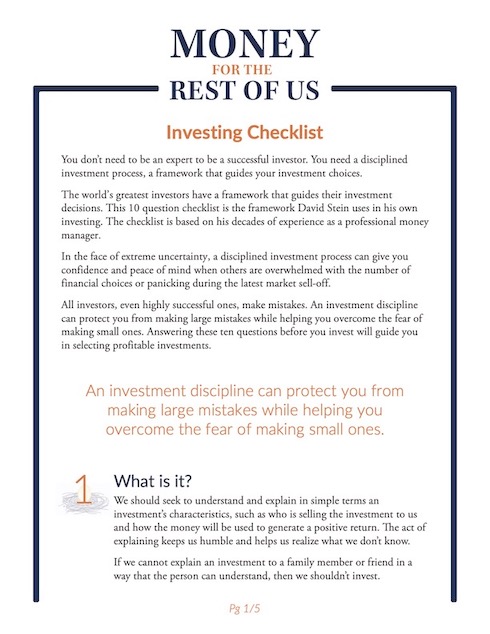Why 401k and other defined contribution schemes are flawed, leading to a generation of workers unprepared for retirement. What are the solutions to fix the mess.

Topics covered include:
- Why 401k and other defined contributions haven’t worked, despite their popularity
- Why defined benefit pension plans declined
- Why 401k plans are treated like emergency funds
- How to combine the best of 401k and defined benefit pension plans
Show Notes
The Shift that Redefined Retirement Security by Shashwat Vidhu Sher—SSRN
Was the 401(k) a Mistake? by Michael Steinberger—The New York Times Magazine
U.S. Retirement Assets: Data in Brief—Congressional Research Service
Where do my CPP contributions go?—CPP Investments
Episode Sponsors
LinkedIn Jobs – Use this link to post your job for free on LinkedIn Jobs
Monarch Money – Get an extended 30-day free trial
Related Episodes
460: Should You Be Invested 100% in Stocks Before and During Retirement? A Recent Study Says Yes.
441: What If Social Security Had Been Privatized?
279: Why All Retirees Should Consider an Income Annuity
Transcript
Welcome to Money for the Rest of Us. This is a personal finance show on money, how it works, how to invest it, and how to live without worrying about it. I’m your host, David Stein. Today is episode 497. It’s titled “How to Fix the Retirement Savings Crisis.”
Will She Have Enough to Retire?
Recently, I read an article written by Michael Steinberger in the New York Times. The article was titled “Was the 401k a Mistake?” 401k being the U.S. version of defined contribution plans, which have, for most of us, replaced defined benefit plans or traditional pension plans where you’re guaranteed a certain payment for the rest of your life.
The article kicked off featuring a woman named Jen Forbus. She turns 50 this year, has good health, used to work as a schoolteacher, but now is an editorial supervisor at an educational publishing company. She makes high five figures, so I assume around $90,000 a year. She anticipates paying off her mortgage in the next decade and recently made her last car payment. She doesn’t have any other debt.
She has $200,000 in savings, and she would like to stop working when she’s 65. She lives a modest life. She understands the investment options in her 401k plan and has a 60% allocation to stocks, 40% to bonds. She saves 9% of her salary, and then her employer kicks in another 5%. So she’s saving 14% of her income per year going into her 401k.
The author of the article says “Even if the stock market delivers blockbuster returns over the next 15 years, her goal of reaching a million dollars”, that’s what she thinks she needs to retire, is going to be difficult to reach.
Now, she’s not planning on social security. I think that’s a mistake. I think she can assume that she will receive, based on her salary, a couple thousand dollars a month in social security benefits. But she says, “I feel like it’s too uncertain and not something I can depend on.” So she wants to fund her entire retirement out of her savings, her personal savings. She doesn’t participate in any type of defined benefit pension plan.
So Steinberger said even if the stock market delivers blockbuster returns over the next 15 years, her goal is going to be difficult to reach. And this assumes that she doesn’t have a catastrophic setback, like losing her job or suffering a debilitating illness. Jen’s entire retirement is based on her personal savings, her ability to continue to save, get the company match, and what the market does. So I thought—well, I’ll go through the analysis.
One of the tools on Money for the Rest of Us Plus, our premium membership community, is we have a retirement planning calculator and a retirement spending calculator. And so I went through and put in some assumptions. We assume a $200,000 starting savings for an individual age 50.
I used some assumptions I got from Asset Camp, our stock and bond market research tool, to come up with an expected return for global stocks of 7.2%, for bonds of 4.5%. So a 60% stock, 40% bond allocation would have an expected return of 6.1%. I put that into the calculator. I assumed that she increased her contribution as her salary increased by 3% per year and that inflation was at 3% per year.
Given that savings, 40% of income going into savings, a 6.1% annual return, after 10 years, her nest egg would grow to $556,000. In 15 years, when she turns 65, she will be short her nest egg $852,000. But if she worked another two years, she would have just over a million dollars in 17 years.
Look at the big difference between year 15 and year 17. $150,000 increase, due to the compounding, which is why Jen is incredibly vulnerable, like all of us, to sequence a return risk. What returns do we earn on our investments in those final years leading up to retirement, or even the first few years of retirement if there’s a major market sell-off? That is a flaw in our current retirement funding mechanism. A flaw that didn’t exist previously, before defined contribution plans became the default choice for retirement.
As a Money For the Rest of Us Plus member, you are able to listen to the podcast in an ad-free format and have access to the written transcript for each week’s episode. For listeners with hearing or other impairments that would like access to transcripts please send an email to team@moneyfortherestofus.com Learn More About Plus Membership »
